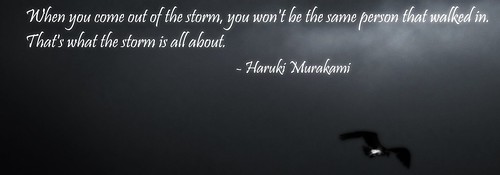
Yesterday, I went on a bit of a spree on RealityFragments.com, with the results fairly summarized on the RealityFragments About Page. The reason for the spree was pretty simple.
There are some issues with design.
Some of it is implicit in WordPress.com. To ‘like’ or ‘comment’ on content, you require a WordPress.com account. It’s painful for non-WordPress.com users to do that when they’re used to logging into everything automagically – and it’s also necessary to avoid spam comments that link to websites that sell everything from ‘getting rich quick’ schemes to promises of increasing the prominence of one’s nether regions. It’s a hard balance.
And it’s kinda crappy design because we, collectively, haven’t figured out a better way to handle spammers. I could get into the failures of nations to work together on this, but if we go down that path we will be in the weeds for a very, very long time.
Suffice to say my concern is that of the readers. The users. And it brought to mind that yellow book by Donald A. Norman, the very color of the book being an example of good design. After all, that’s how I remember it.

“Design is really an act of communication, which means having a deep understanding of the person with whom the designer is communicating.”
Donald A. Norman, The Design of Everyday Things (2013)
This is where we who have spent time in the code caves get things wrong. Software Engineers are generally rational beings who expect everyone to be rational, and if we just got rid of irrational users “we would have a lot less problems!”.
I’ve spent about half a century on the planet at this point, and I will make a statement: By default, humans are irrational, and even those of us who consider ourselves rational are irrational in ways we… rationalize. Sooner or later, everyone comes to terms with this or dies very, very frustrated.
The problem I had is that I wasn’t getting feedback. The users can’t give it without giving WordPress.com the emotional equivalent of their first born child, apparently. Things have gotten faster and we want things more now-er. We all do. We want that instant gratification.
In the context of leaving a comment, if there are too many bells and whistles associated with doing it, the person forgets what they were going to comment about in the first place.
“The idea that a person is at fault when something goes wrong is deeply entrenched in society. That’s why we blame others and even ourselves… More and more often the blame is attributed to “human error.” The person involved can be fined, punished, or fired. Maybe training procedures are revised… But in my experience, human error usually is a result of poor design: it should be called system error. Humans err continually; it is an intrinsic part of our nature…. Worse, blaming the person without fixing the root, underlying cause does not fix the problem: the same error is likely to be repeated by someone else.”
Donald A. Norman, The Design of Everyday Things (2013)
The thing is – there is no good solution for this. None, whatsoever, mainly because the alternative that was already there had not occurred to the users. It’s posted on Facebook, on the RealityFragments page, where I mix content from here and RealityFragments. The posts can be easily interacted with on Facebook for those who use Facebook. Sure, it doesn’t show on the website, but that doesn’t matter as much to me as the interaction itself?
Factor in that it’s easy for my posts to get buried by Facebook algorithms, it becomes an issue as well.
Thus, I created the RealityFragments Group on Facebook. People join, they can wander into the group and discuss stuff asynchronously, instead of the doom scroll of content people are subjected to. My intention is for my content not to compete for attention in that way, because it simply can’t.
I don’t have images of models trying on ideas. I don’t have loads of kitten pictures, and I’m certainly not getting dressed up and do duck lips to try to convince people to read and interact with what I create. I am also, for the record, not willing to wear a bikini. You’re welcome.
This was less than ideal solution to the problem. Maybe.
Time will tell if I got it right, but many more technically minded people will say, “You could just manage your own content management system on a rented server.” This is absolutely true.
What’s also true is that I would then be on the hook for everything, and when a content management system needs love, it wants it now. Thus when I’m ready to start writing, I suddenly have to deal with administration issues and before you know it, I’ve forgotten what I wanted to write – just like the users that have to create an account on WordPress.com to comment or like. A mirror.
So this is a compromised solution. Maybe. Time will tell.
And if you want to interact with this post and can’t log in to WordPress, feel free to join the RealityFragments.com Facebook group. Despite it’s name, it’s also for KnowProSE.com

